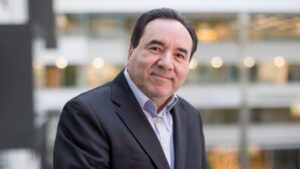Shifting Innovation Focus in the U.S: From Volume to Value
- United States | 9 July 2018

The biopharmaceutical industry is undergoing a transformative shift in its approach to drug discovery and development. Moving away from the traditional blockbuster model, the industry is now embracing more specialized treatments and aiming for the ultimate goal of discovering cures for diseases. This shift is driven by the concept of precision medicine, which recognizes that each patient is unique in both the experience of their disease and their response to treatment. Biomarkers have emerged as valuable tools for monitoring and predicting drug effects in the human body. Precision medicine has found its poster child in the field of oncology, which has become the therapeutic area with the highest investment and significant traction due to the multitude of intervention points.
According to Clarivate Analytics, cancer accounted for a significant portion of the industry’s investment in 2017, totaling $80.7 billion, primarily through grants and deals. Neurology/psychiatric treatment followed at $17.2 billion, with immune therapies at $15 billion, and infection at $14.3 billion. Concerns were raised when drug approval rates dropped in 2016 due to stricter requirements for safety and efficacy evidence. However, 2017 saw a surge in the approval of over 50 novel drugs, the highest number in the past two decades. Improved success rates in clinical trials not only reduce the average timelines and costs of drug development but also hold the potential for lower drug pricing in the long run by mitigating reimbursement costs.
Demonstrating clear clinical benefits in areas with high unmet medical needs has garnered favorable attention from the FDA, which has shown greater flexibility in its regulatory approach. Rafael Pharmaceuticals, based in New Jersey, is a prime example. With a focus on oncology in areas of high unmet need, Rafael holds five orphan designations for its lead candidate, CPI-613, which targets pancreatic cancer, acute myeloid leukemia (AML), myelodysplastic syndromes (MDS), Burkitt lymphoma, and T-cell lymphoma. Sanjeev Luther, CEO of Rafael Pharmaceuticals, highlighted the urgent need for effective treatments in Burkitt lymphoma, where a significant percentage of patients experience relapse and the median overall survival is a mere 90 days. Through their innovative drug, Rafael obtained orphan designation within six weeks instead of the typical six months, indicating the high demand for novel treatments in this field.
Rafael Pharmaceuticals plans to initiate a small, single-agent trial for Burkitt lymphoma at three sites, aiming to extend patient lifespan by 25%, from 90 days to 120 days. The company’s strategy involves bringing a new indication to the market every year and actively developing another drug, CPI-618. Additionally, they have recently acquired two more molecules within the field of cancer metabolics.
In parallel with the pursuit of more effective and potentially curative treatments, a deeper understanding of patients and an expanded range of treatment options are paving the way for improved outcomes. Barbara Weber, CEO of Tango Therapeutics, emphasizes the high probability of success when combining a known genetic target, a promising molecule, and the right patient population. Tango Therapeutics focuses on identifying novel genetic drug targets for specific cancer subtypes. Weber highlights the significance of preclinical models that closely resemble patient tumors in assessing the clinical signals to expect. This approach not only holds promise in terms of efficacy but also makes financial sense by enabling clinical proof-of-concept in Phase 1 studies.
Tango Therapeutics is currently pursuing three areas of drug targets: tumor suppressor gene loss and synthetic lethal pairings for targeting tumors, context-dependent oncogenes, and identification of drug targets through in vivo systems to enhance the activity of immune checkpoint inhibitors by understanding which tumor suppressor genes mediate immune evasion.
By targeting specific patient populations and focusing on areas of high medical need rather than sheer volume, biopharmaceutical companies are experiencing increased success with streamlined development timelines and faster market entry. Although the financial rewards may appear less attractive when addressing smaller patient populations without exorbitant pricing, the time and cost savings during the development period alleviate the reimbursement burden and provide faster returns for the company and its investors.
Drug redevelopment has become an attractive avenue for specialty pharmaceutical companies, thanks to advancements in drug discovery, a renewed focus on improving patient outcomes, and favorable regulatory pathways. These companies are leveraging the FDA’s 505(b)(2) mechanism, which allows them to enhance existing drugs by focusing on factors such as bioavailability and delivery methods.
As the complexity of new molecules in development increases, many face challenges related to solubility and bioavailability. However, increasing the dose is not always a viable solution due to associated side effects and toxicity. Jim Huang, CEO of Ascendia Pharmaceuticals, acknowledges the high dose burden in oncology and the need to address bioavailability issues. Ascendia, a recent graduate of New Jersey’s CCIT incubator, is dedicated to advancing a pipeline of enhanced formulations for existing drug products. Huang explains that by significantly boosting bioavailability, the dose burden can be reduced while improving the pharmacokinetic properties.
In addition to its pipeline of enhanced formulations, Ascendia also offers contract services for pre-clinical and clinical stage drug candidates. The company is exploring methods for controlled drug release and investigating the application of its technology for oral delivery of large molecules.
While oral solid dosage remains the dominant form of drug administration in the market, there is a growing emphasis on patient-centric approaches, leading companies to consider the most optimal delivery methods. For certain patient populations, such as pediatric and geriatric patients, topical and transdermal delivery are gaining preference, particularly in pain relief. Grace Therapeutics is one company pursuing this route, specifically with its GTX-101 candidate for Postherpetic Neuralgia (shingles pain). The current treatment for this condition involves the lidocaine patch. George Kottayil, co-founder and CEO of Grace Therapeutics, highlights the need for a better delivery system for neuropathic pain relief. The lidocaine patch takes about two weeks to provide adequate pain relief, prompting Grace Therapeutics to develop a first-in-class solution—a dose spray delivery system, essentially a “thin film in a can.” This innovative approach involves the spray penetrating the skin and forming a thin drug-imbedded film that provides both immediate and sustained effects over 24 hours. The product is self-administered, portable, and has a higher concentration of permeation in the skin, minimizing side effects.
Grace Therapeutics’ pipeline focuses on orphan and rare diseases, with candidates targeting conditions such as ataxia-telangiectasia, aortic aneurysm, Subarachnoid Hemorrhage, and trigeminal neuralgia. The company anticipates its first approval in 2018 and expects to generate revenue in 2019/2020.
As companies strive for medical advancements through novel molecules, they are increasingly prioritizing the patient’s experience with the drug. This translates into a greater emphasis on drug delivery and a more targeted approach to meet patients’ needs.








